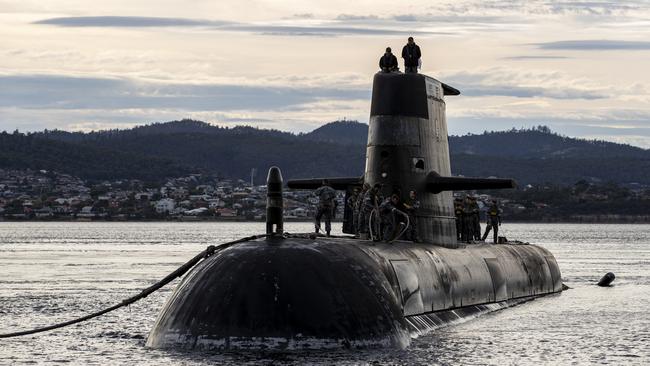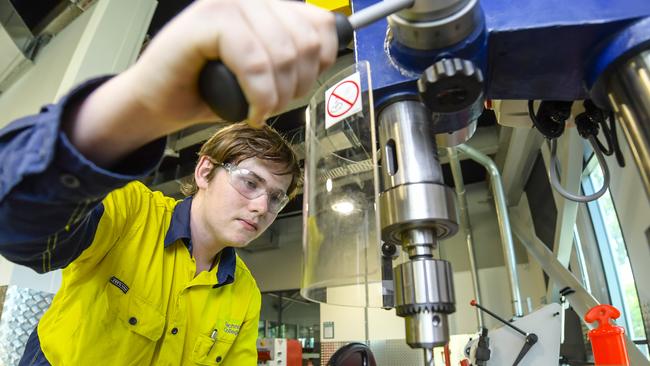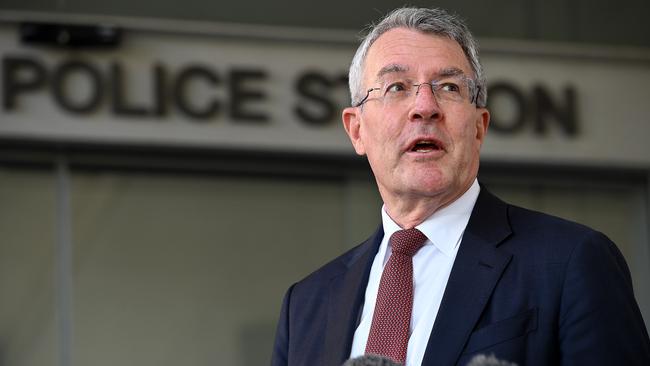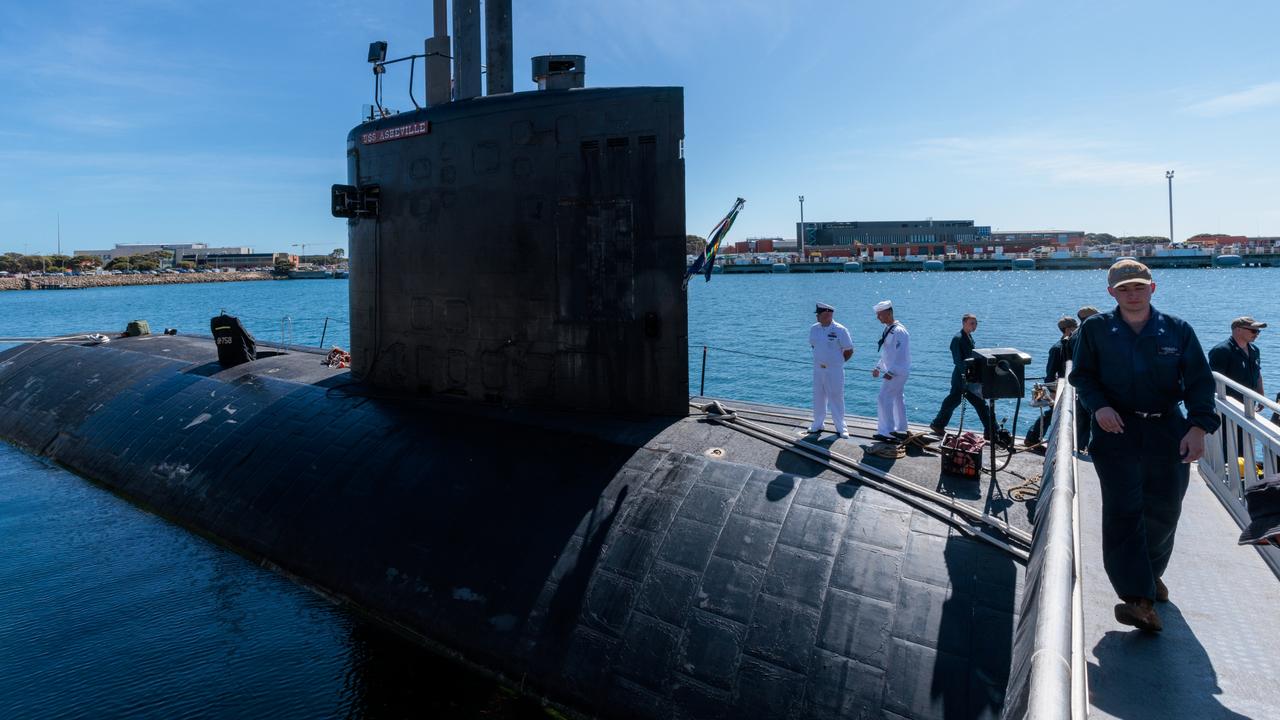Australian federal budget reveals $100m Defence spending and crackdown on Chinese spies
More than $100 million will be spent on preparing Australia for war, including the creation of new public service jobs to support the delivery of the new nuclear-powered submarines.
Australia’s defence budget has been placed on a war footing with more than $100m to create an industrial workforce of welders, ship builders, missile makers and train TAFE teachers for a new generation of military programs.
Most of the allocation, split into 10 programs, is pointed towards the acquisition and later domestic manufacture of nuclear-powered submarines under the AUKUS security pact.
The newly created Australian Submarine Agency will create 900 new public service jobs alone by 2026-27 to support the delivery of the new subs. But thousands more will be needed to create and sustain the underwater warfare capability.

The total uplift of the defence budget is $5.7bn over the next four years for a total of $53bn committed to national defence, the increase over the next decade to hit 2.4 per cent of GDP.
The rise is the biggest in 75 years – or since 1949 – when military spend went to 5 per cent as Australia engaged in the Korean War. This year’s budget is designed to support the most significant “reset” to ADF priorities in years.
Much of the budget will be spent on acquisitions within the decade, including more long-range missiles and drones, hardening of our northern defence bases, a new navy surface fleet of combat ships and creating a Marine-like new amphibious force within the army.
The budget boost comes as the ADF transforms to a more “focused force of deterrence”, looking to keep adversaries as far away as possible from our shores and the wider Indo-Pacific and using a wider range of government agencies to do it.
“This framework is based on the concept of national defence – a co-ordinated, whole-of-government and whole-of-nation approach that harnesses all arms of national power to defend Australia and advance our interests,” Defence states.
For the AUKUS submarines program, $34.7m has been set aside for a skills apprenticeship program for a variety of trades, $4.7m for a welders program and transitioning of existing workers into the subs enterprise, $68.4m for a Skills and Training Academy and $4m to train TAFE teachers in subs program delivery.
There is also $16m for school scholarships to entice high schoolers into STEM undergraduate courses.

Workforce is the biggest challenge, with a budgeted full-time ADF workforce of 63,597 troops, up from the current 58,000 personnel.
The budget papers note culture remains an issue and the ADF is continuing to reshape to become “more representative of wider society” and conceded workforce targets were unlikely to be met.
Within the overall budget, $7m-$10m has been allocated to 26 new landing craft (littoral manoeuvres) for the army’s amphibious restructure, up to $18bn to upgrade bases including RAAF Base Tindal, defence precincts in Darwin and Townsville and HMAS Coonawarra and $11bn for the new surface fleet to lift the navy’s vertical missile firing capacity from 200 cells to more than 700 cells.
CHINESE SPY CRACKDOWN
Chinese spies trying to hack into Australia’s power, water and communications systems will be targeted under a new scheme to prevent sabotage.
National security agencies will set up a Technology Foreign Interference Taskforce to work with the private sector to protect sensitive “information from espionage”, budget papers reveal.
Australia’s top spy, Mike Burgess, this year said the threat level for “espionage and foreign interference was certain”.
“Australians need to know that the threat is real. The threat is now. And the threat is deeper than you might think,” said Mr Burgess, director-general of the Australian Security Intelligence Organisation.

He warned that a group of spies, known as the A-team, was targeting public servants with access to Australia’s defence and security secrets.
One former politician “sold out their country” after being successfully recruited by a foreign government.
Attorney-General Mark Dreyfus responded to Mr Burgess’s alert with an additional $30m to take foreign spies to court and stop national security documents from being tabled in legal proceedings.

ASIO, the AFP, financial watchdog Austrac, the secretive Australian Signals Directorate and the Office of National Intelligence Will also share in an extra $30m to “to discover, disrupt, and investigate foreign interference activity”.
Protecting the secrets of Australia’s nuclear-powered submarines as part of the AUKUS deal has also attracted funding.
An extra $109m will be provided over two years to roll out a National Criminal Intelligence System to track criminals across the country.

The Australian Criminal Intelligence Commission has been tasked with rolling out the system, which gives police access to “real-time criminal intelligence”.
The system also tracks domestic violence suspects, helping police protect victims.
More than $160m was set aside to create a national gun register.
“Once established, police will know where firearms are, who owns them, and what other risks to the community and police may exist,” budget paper two said.
Lawyers, real estate agents and accountants will be targeted by a new anti-money laundering scheme, now before parliament.
Mr Dreyfus has set aside $160m for Austrac to police the new laws once legislated.
Originally published as Australian federal budget reveals $100m Defence spending and crackdown on Chinese spies


